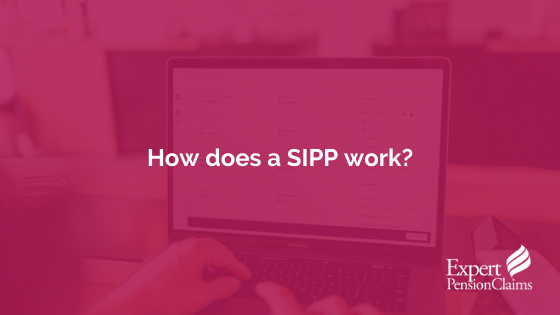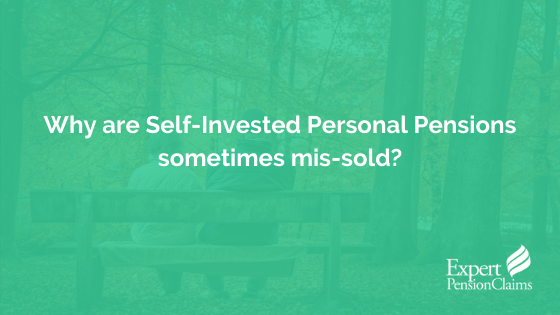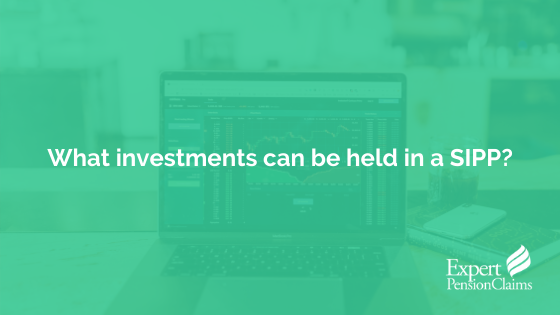We specialise in handling SIPP claims and our expertise is clearly demonstrated in the breadth of knowledge found in our collection of guides & insights. In this particular guide, we’ve provided a comprehensive look at SIPPs, how they work, their investment benefits, and the ways in which they can go wrong.
What is a SIPP?
Self-Invested Personal Pensions were introduced in 1989 so that people could take greater control of their pension pot and allocate savings with full control. However, the issue with this is that only experienced investors should have been able to appreciate this greater flexibility and freedom.
Instead, increasing numbers of inexperienced one-time investors began to give up their occupational pensions for SIPPs which, on the whole, are riskier than the workplace pensions we’re used to. Historically, what this did is give way to countless financial advisers who took advantage of these one-time investors by providing poor financial advice that was rarely in anybody’s best interests (except, perhaps, the adviser and their sizable commission bonuses).
SIPPs are often described as a ‘pension wrapper’
This is a common description of SIPPs, but what does it actually mean? In a way, SIPPs work like personal (occupational) pensions in that we draw income from SIPPs and personal pensions when we retire. The finances are there when we need them.
However, with SIPPs, your retirement finances are held in investments. Hence, the term ‘pension wrapper’ – the value and returns on these investments make up your retirement money. The investments are held in your Self-Invested Personal Pension, ‘wrapped’ up for when you need them.
We’ll get into this later, but you can invest in anything really. It’s here where the riskier aspects of SIPPs will be found. If you’re going to transfer your personal pension into a SIPP, you need to have some investing experience or rely on investment advice from a legitimate professional. There are so many questions you need to ask. How confident are you in the growth and stability of the enterprise you’re investing in? This is just one of the many questions you need to ask a SIPP provider (as well as yourself).
How does a SIPP work?
SIPPs were designed for people who want more flexibility with how they handle their pension money. Within limits, they can switch, change, and allocate funds as they see fit.
Essentially, SIPPs are do-it-yourself pension schemes. People saving for retirement may choose SIPPs because they want full control and transparency over where their money is being invested. With a SIPP, you can invest almost wherever you like. For this reason, SIPP pension plans are often referred to as ‘execution-only’, which means that the SIPP provider will simply follow your instructions as to where your money is invested, rather than advising you. Of course, you can choose varying levels of guidance and support from your provider.
As we’ve said, SIPPs are riskier than traditional pension schemes. You get flexibility, but there’s also lots of responsibility. You need to feel comfortable navigating risk and have a secure investment strategy. When you discuss your options with your SIPP provider, you can agree on a level of risk and responsibility you want to take on. At one end of the spectrum, you can opt to have complete control with zero input from your provider (this would be on an ‘execution-only’ basis). At the other end of the SIPP spectrum, you may work closely with your provider to earmark potential investment opportunities and indicate recommended payment strategies, etc. The value of your investments will fluctuate according to the stock market, and of course, with a solid strategy, your returns will build into a significant pension pot.
Once you reach 55 you can access your whole pension pot (of course you can wait longer and watch these savings grow). Because with SIPPs you have full control, you can decide how and when to use the money that has grown in your SIPP to provide you with an income. Tax-free, you can take up to 25% of your savings as a lump sum (you may also be able to withdraw funds before you turn 55, but you are likely to face hefty fees in doing so).
When you reach the desired age and would like to withdraw money from your SIPP, you generally have three options.
- In one lump sum, you withdraw your entire fund
- You can withdraw regular payments (like a monthly or annual income)
- Combine an upfront sum alongside regular drawdown payments
You’ll find more details in our guide to SIPP withdrawal rules, so be sure to take a look. For now, we’re going to take a quick look at SIPPs for investment in the property market.
How does a property SIPP work?
In this section, we’re going to look at how exactly property purchases work with SIPPs.
Residential property
You can invest in residential property using your SIPP, but it has to be through a residential property fund or a Real Estate Investment Trust (known as a REIT). REITs work much like other open-ended funds but there are also some restrictions that you would need to discuss with your SIPP provider (for example, open-ended residential property funds cannot hold more than 15% of the fund in one property, and you may face other restrictions if you’re investing in a property with a lease of fewer than 60 years). You can invest directly in houses, as well as in companies that themselves invest in property).
Commercial property
There are generally two ways that you can invest in commercial property with a SIPP. The first (and simplest) way is to invest in a commercial property fund. The other is to buy the commercial property outright and put them into your SIPP portfolio (many small businesses do this, and put their own premises into their SIPP).
Regarding the above areas, you would need to discuss them at length with an IFA or your SIPP provider.
SIPP FAQs
Here are the ins and outs of exactly how a SIPP works and what they usually entail. We’ve structured it using commonly asked questions which, when answered, will give you a robust understanding of how a SIPP works.
Who can open a SIPP?
When it comes to opening a SIPP, anyone who is a UK resident or a Crown employee (someone who holds an office/is employed under the Crown like the armed forces or a civil servant) can open a SIPP. So can their spouse or civil partner working overseas. As long as the individuals in question are under 75, they can open and pay into a SIPP.
You can also open a SIPP for a dependent, and for someone under 18 (in which case it would be a Junior SIPP which will have slightly different rules). As well as this, you can actually make payments into someone else’s SIPP (on their behalf) as long as they set the SIPP up.
Aside from the above, the rules for SIPPs are more or less the same as for personal pensions. You will benefit from similar tax relief (more of that to come), as well as the same allowances.
How do you open a SIPP?
Now, we’re going to look at the specifics surrounding how a SIPP is actually set up. Before we look at a step-by-step process, there are two routes that are usually taken before setting a SIPP up.
One is to go directly to the SIPP provider (hopefully having done your research into which provider and which plan may be best for you). The other, more recommended, route is to enlist the help of an independent financial advisor (IFA) whose job it is to listen to your goals and concerns, consider your financial situation, and offer recommendations of SIPP providers. Either the IFA or your SIPP provider will also work with you to create an investment strategy that ensures your money goes to the right places.
Here are four steps you need to think about when setting up a SIPP.
- Review your current pension situation, decide which plans you want to move into a SIPP. Some pension plans are better left where they are, while others may benefit from transferring into a SIPP.
- Think about how much risk you’re comfortable with. Generally speaking, higher risk means higher rewards over longer periods of time, but this isn’t set in stone. Again, seek advice from an IFA regarding the level of risk you are likely to face.
- Think about where you want to invest your money. Do you have any preferences? Are there businesses or industries in which you are particularly experienced or knowledgeable? Our Guide to Pensions Investments should put you in the right direction.
- You now need to decide who you want to manage the SIPP. Of course, you can do this yourself but most speak to financial advisers or pass most of the responsibility onto the SIPP provider.
How do you pay into a SIPP?
Generally speaking, you can pay whichever way suits you. You can make both regular and one-off payments, and your retirement savings will stack up considerably with a payment plan that works best for you.
We cover this in much greater detail in our ‘How much money can I put in a SIPP’ article, so be sure to take a look.
What about costs, fees, tax benefits, etc?
There are significant costs associated with SIPPs, and if you have transferred your occupational pension into a SIPP without knowledge of SIPP fees then there’s a chance you’ve been mis-sold. To prevent mis-selling from happening to you, you need to be able to spot a reliable SIPP provider that you can trust.
Here are just a few of the main costs and fees you need to know about, and within these fees are more fees specific to your particular SIPP. To learn more about these costs, you need to take a look at our article ‘Costs and charges associated with SIPPs’. This content looks at the below in much closer detail.
- Admin fees
- Fund management charges
- Dealing charges
- Government charges
What about tax benefits?
Any money that you invest in your SIPP will be topped up 20% by the government, and higher or additional-rate taxpayers can claim a further 20% – 25%. Like other pensions, investments in SIPPs are able to grow free from Income Tax and Capital gains tax.
Take a look at our article on SIPPs and tax, as it covers everything you need to know about the two..
Advantages and disadvantages of SIPPs
Finally, we’re now going to look at the pros and cons of SIPPs. Take a look!
Advantages of SIPPs
- Flexibility and full control of your retirement money.
- Control over the kinds of investments you make.
- You can match your risk level to any investments you want.
- You’ll receive tax relief from the government.
- You can withdraw up to 25% of your SIPP pension tax-free.
Disadvantages of SIPPs
- Although this only applies if you’re inexperienced, there are significant risks to SIPP investing. Again, this can be disregarded if you are experienced and willing to accept significant risk levels.
- There are strict limits on exactly how much tax relief you’ll receive from SIPP savings (tax relief only applies to contributions of up to £40,000 per year).
- If a SIPP property purchase falls through, the lost costs will be higher than if a SIPP wasn’t involved.
- If you desire to switch SIPP providers, you’ll be charged a significant amount (this gets considerably more complicated if property is involved).
- You are likely to find yourself subjected to the ups and downs of the stock market. This is unavoidable, so you need to accept the possibility of stock market investments going down as well as up.
Have you been mis-sold?
When it comes to SIPPs, you need to be informed about the whole process. If you have transferred your personal pension into a SIPP and you don’t think it was the right decision for you, then you may have been mis-sold.
Get in touch with our team of mis-sold pension claims specialists, and we will help launch your SIPP claim to potentially recoup any losses experienced. Take a look at our SIPP testimonials where you can learn about other cases we’ve assisted.
In the meantime, be sure to take a look at our Guides & Insights section. It’s regularly updated with developments from within the financial mis-selling world. You can also call us on 0800 849 5078 or 0161 968 0768, and here you can fill in our quick enquiry form.














